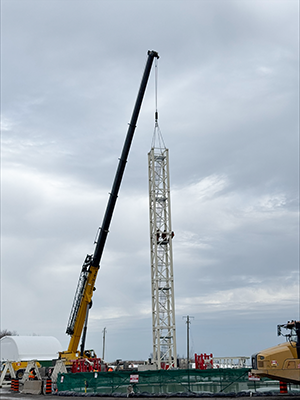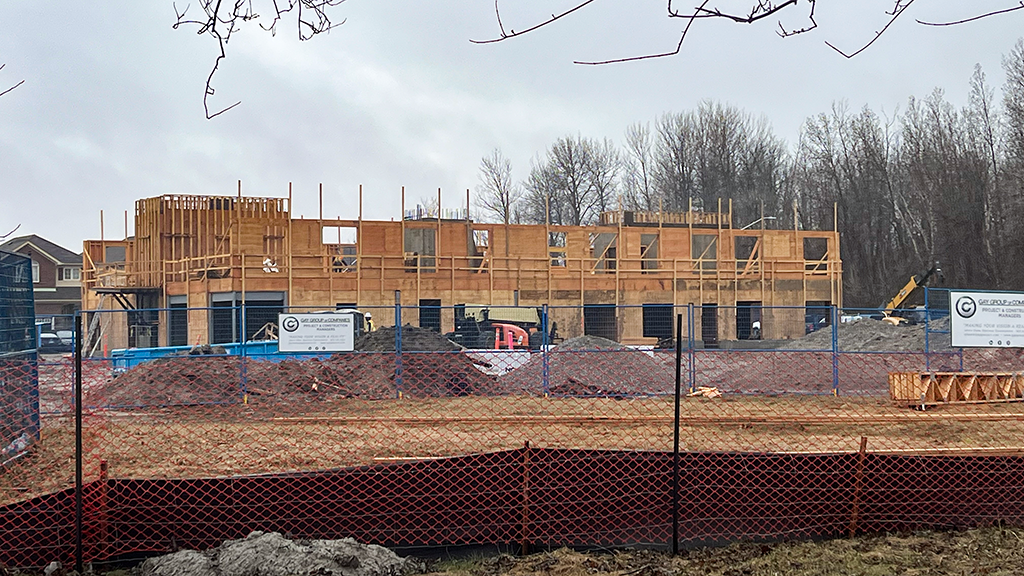A forecast is a snapshot in time.
For the construction industry that lens is now shifting with the impact of tariffs on both sides of the border still to be determined, says Sean Strickland, executive director of Canada’s Building Trades Unions, when commenting on BuildForce Canada’s 2025–2034 Construction and Maintenance Looking Forward national forecast.
“The forecast for construction, the trend line is quite positive going forward in terms of the work opportunities and the amount of tradespeople we need and the efforts to recruit people…but that’s said with a huge caveat,” he told the Daily Commercial News. “These tariffs could really set the construction industry back on the heels for a period of 12 months to two years depending on how quickly the federal government is able to put into place measures to help rebuild Canada and rebuild infrastructure more quickly.”
U.S. President Donald Trump unveiled a 10 per cent baseline tariff on imports from most countries on April 2 and a lengthy list of tariff levels dozens will face, though a White House fact sheet said goods imported under the Canada-U.S.-Mexico Agreement on trade, known as CUSMA, still do not face tariffs.
Trump is also going ahead with previously announced 25 per cent tariffs on automobile imports, which add to existing 25 per cent tariffs on all steel and aluminum imports into the U.S., including from Canada.
BuildForce Canada has made it clear the investment trends and employment projections were developed with industry input prior to the emergence of potential trade tensions between Canada and the United States.
Bill Ferreira, BuildForce Canada executive director, did address this uncertain climate and its potential implications.
“What we don’t know yet is what the Canadian reaction is going to be specifically and what impact that may have on construction supply chains,” he said, outlining large-scale owners may have to show leniency making “allowances for any cost escalation that might occur and not try and force that on to the construction industry and anybody who’s already undertaking a project.”
Both Strickland and Ferreira were quick to point out that challenging times often stimulate projects and investment.
“With this threat of tariffs comes the opportunity for us to improve labour mobility across the country, to reduce interprovincial trade barriers and to build national infrastructure to get our abundance of resources to different markets,” Strickland highlighted. “Can Canada rise to this threat of tariffs and create an opportunity which will help sustain our economy going forward and provide tremendous opportunities for the construction industry?”
What the numbers say
According to BuildForce, construction investment levels increased modestly across Canada in 2024, with both the residential and non-residential sectors reporting growth.
That outlook remains the same looking forward.

After remaining largely unchanged in 2025, the residential sector is projected to chart a steady series of increases from 2026 to 2034. Activity is driven initially by strong demand for new-housing construction as interest rate pressures ease, the report notes, and pent-up demand brings consumers back to the market. In later years, that shifts to growth in renovations.
“The long-term projections are still for stronger residential construction moving out right through the forecast…in particular, renovations and the renovations market is going to continue to increase, particularly in larger urban centres,” explained Ferreira.
This is due to space limitations and a more mature housing stock.
Non-residential is projected to ebb and flow in line with the timing of current and proposed major projects.
There is a forecast peak in 2027 with the culmination of work on projects across the engineering and ICI building construction sectors.
“On the non-res side, we still continue to see very strong demand,” said Ferreira. “We haven’t yet seen any significant cancellations of projects related to uncertainty around tariffs. Obviously, that will have some impact on the industry.”
Investment does slow into 2030 before increasing in line with population demands and economic growth to the end of the forecast period.
Labour force projections
The BuildForce Canada outlook projects 270,000 experienced construction workers will exit the industry due to retirement in the next 10 years.
Growth in demand is projected to require the labour force to expand by 111,600 workers. When this growth is added to projected retirements, the industry’s overall hiring requirement rises to 380,500 workers by 2034.
While most of this requirement can be met by the expected recruitment of approximately 272,200 workers under the age of 30 during this period, the industry may still face a shortage of as many as 108,300.
“As we look out over the next 10 years we continue to see the retirement of individuals in the Baby Boom generation,” stated Ferreria, “but it’s not just the Baby Boom generation. We also have a large segment of the population in the 50 to 64 years of age range, so now we’re starting to look at Generation X also getting ready to retire.”
This leaves a challenge for the industry when it comes to retention and recruitment.
“Over the next 15 years we’re going to be seeing more people move into retirement than young people entering the labour force to replace them,” he said.
“That’s going to make the competition for younger talent really intense. The industry needs to remain focused. There is not one strategy. It’s going to require a few strategies.”
Strickland concurs.
“We need to make sure we keep the momentum going. We have started working with large owners, detailing to us as quickly and accurately as they can what their labour market demand profile is. How many trades do you need and when. The more information we have, the better we’re able to plan and optimize our current workforce,” he said.
“These forecasts indicated we’re going to have a gap, but we always rise to the occasion.
“It’s not perfect, but we’re always moving forward.”












Recent Comments